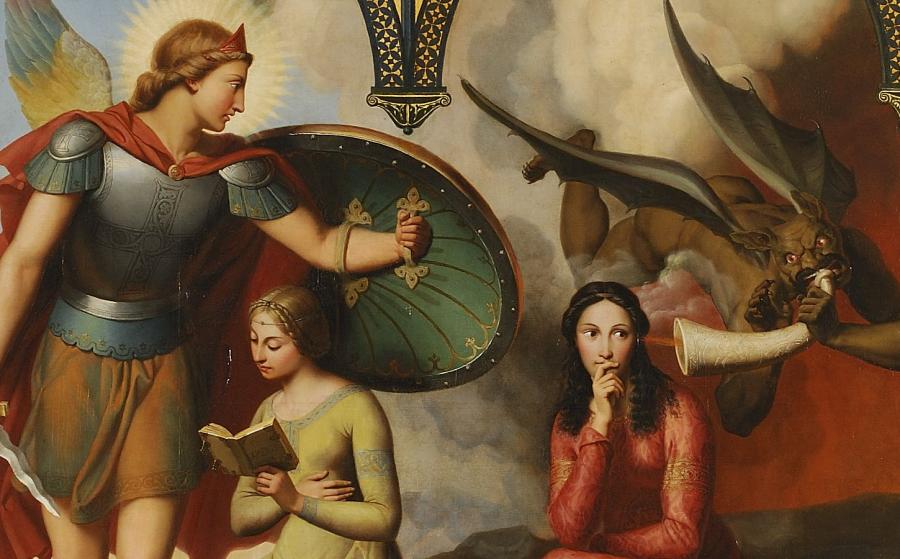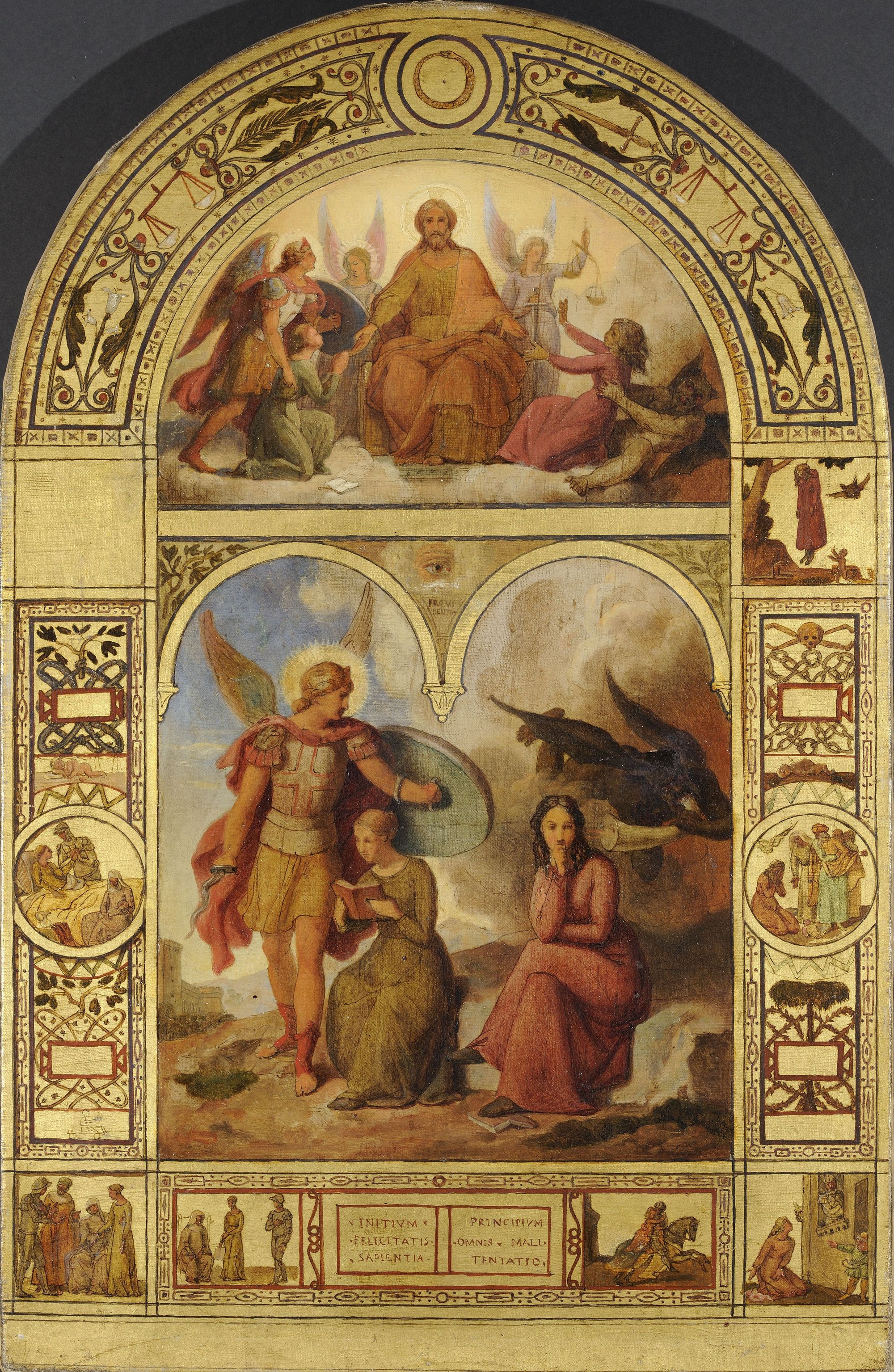Good and Evil
Information sur l’artiste
Victor Orsel [Oullins, 1795 – Paris, 1850]

Le Bien et le Mal, 1832.
Image © Lyon MBA - Photo Alain Basset
This large-format painting suffused with religious symbolism tells the story of two young women who personify two principles: Good and Evil. Facing one another on either side of a central allegory, a series of small scenes illustrate their respective paths. The first of them, dressed in green and shown on the left, follows the path of wisdom and virtue, which ensures that she lives a peaceful, happy life. On the right, the second one allows herself to be tempted by passion: the images describe a dissolute life where she yields to the advances of a knight who abandons her once her child is born. Rejected by her family, she hangs herself. The symbols, ornamentation, and Latin writing accentuate the message.
The choice of format with its curved upper section, the use of a gold background, and the juxtaposition of several scenes from the same story are examples of Victor Orsel’s deliberate use of certain features of church paintings from the late Middle Ages and early Renaissance. However, this work was not a religious commission, but the result of the artist's desire to produce a great painting of a moral, Christian nature. Keen to put his art at the service of the religious resurgence at the beginning of the 19th century, Orsel, an artist from Lyon, moved towards a formal, spiritual notion of painting. He was influenced by the Italian painters of the 15th century and by a group of German artists he met in Rome, the 'Nazarenes', amongst others. This artwork, which showcased this newly developed aesthetic at the time, was presented at the Paris Salon of 1833.
Victor Orsel, Good and Evil :Modello, 1829 Image © Lyon MBA – Photo Alain Basset
1832
Oil on canvas
H. 315; L. 205.8 cm
Long term loan from the Louvre in 1886
Inv. B 376






